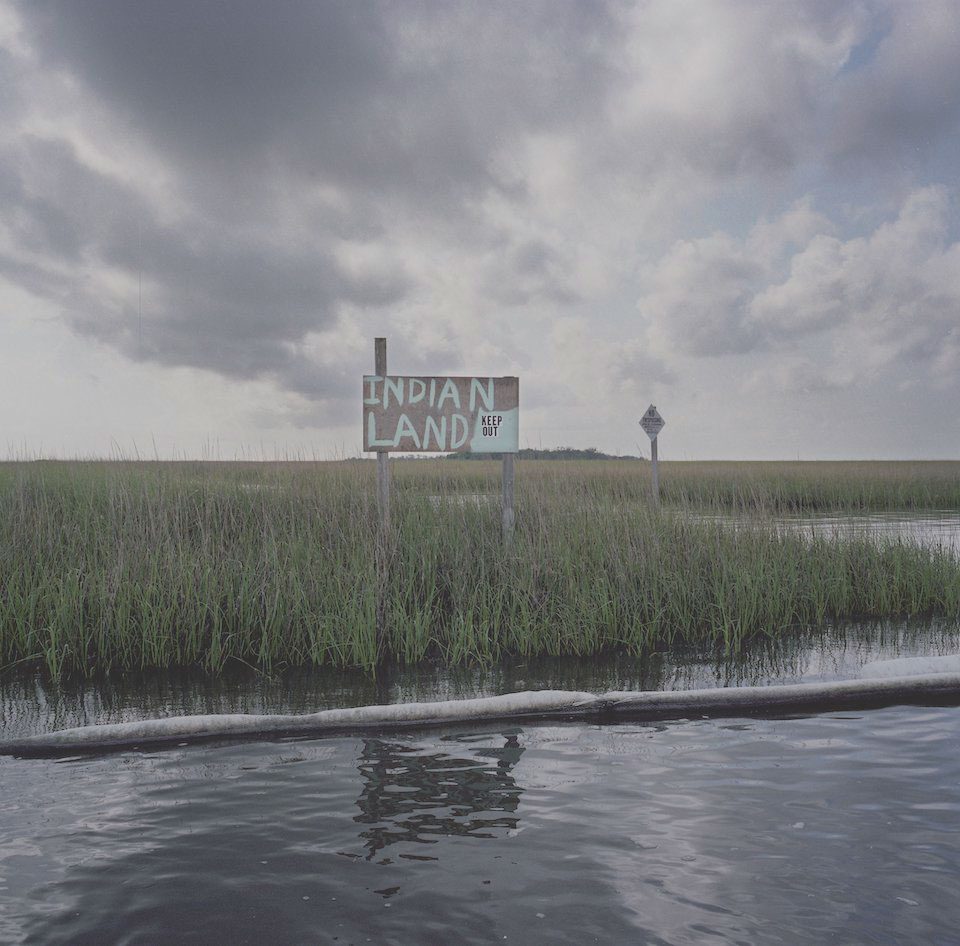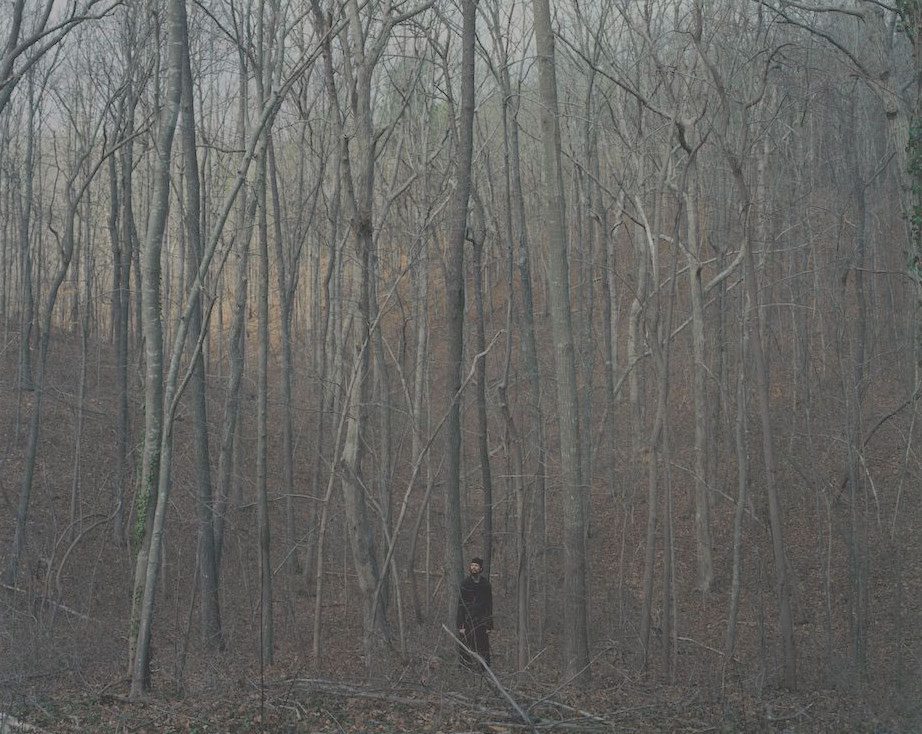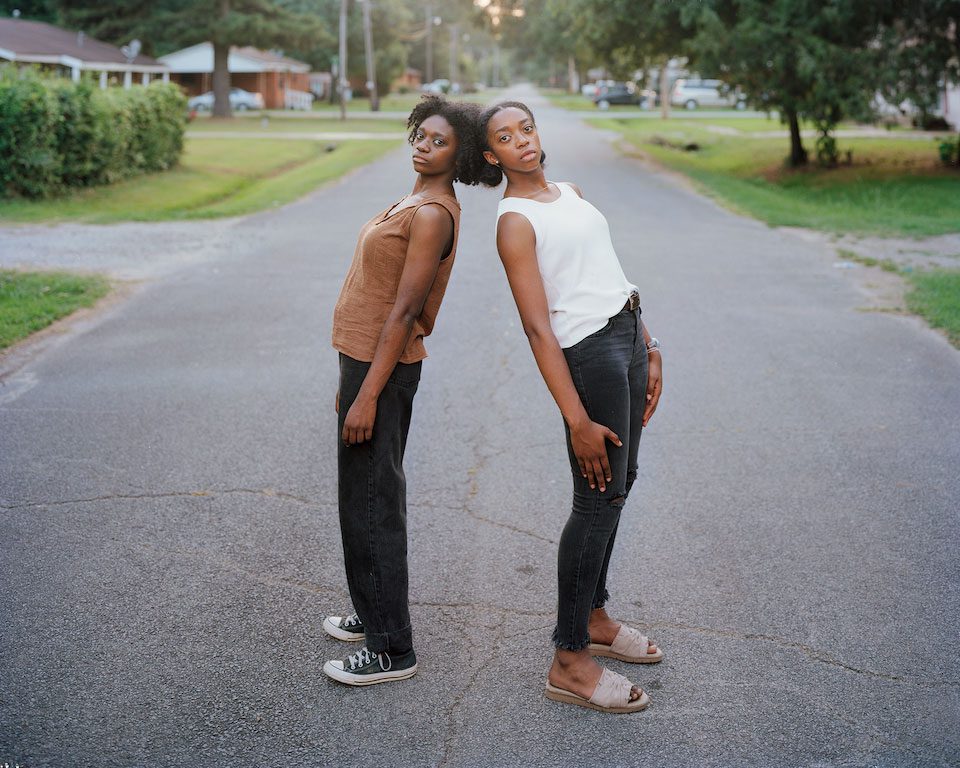The South looms large in the American psyche. The birth- place of key literary, cultural, social and political leaders, it’s also scarred by a violent history of slavery, segregation and deprivation. When the world’s attention turned to the South for the 1996 Summer Olympics in Atlanta, the High Museum of Art began commissioning American photographers to explore the diversity of the place and its people. A total of 16 photographers – all US citizens except for Martin Parr (b. 1952) – have so far contributed more than 300 photographs that have built up the museum’s collection. For the first time since the initiative began a quarter of a century ago, a new exhibition presents all these bodies of work together, focusing on untold stories. “One of the things that art, and photog- raphy in particular, does really well is play in grey areas – in- between spaces and moments,” says Curator of Photography Gregory Harris. “There’s a lot of room for the nuance and ambiguity that’s obviously everywhere, but harder to talk about as the country becomes increasingly polarised.”
Ellen Fleurov, the founding curator of the High’s photogra- phy department, chose a southerner – Sally Mann (b. 1951) – and two Americans from elsewhere in the country – Dawoud Bey (b. 1953) and Alex Webb (b. 1952) – to create new work shot within Georgia. Two years later, Fleurov picked Richard Misrach (b. 1949), expanding the scope to the South as a whole. By granting an unusual amount of creative freedom for an institution, Picturing the South, as a broad curatorial concept, helped raise the profile of both emerging and mid- career artists. Today, the initiative has taken on new relevance, more than a year after Black Lives Matter protests in a politically fractured America grappling with its divisive past. As a result of this, the High’s bold commissioning project plans to further diversify its featured voices moving forward.

The images form a provocative record of a complex part of America. Accounting for about a third of the country geographically, the South gave the world Truman Capote, Har- riet Jacobs, Bree Newsome, Johnny Cash, Alma Thomas and Abraham Lincoln. Here, the Jim Crow racial segregation laws were most prevalent and left the biggest imprint on society for about 100 years until the 1960s – but it’s also a rapidly evolving place that defies simplification. The resulting works examine these dualities. “Many of the photographers have taken it as an opportunity to do something that they’ve never done before, which is exciting to see,” says Harris.
Jim Goldberg (b. 1953), a recipient of the current commis- sion along with An-My Lê (b. 1960) and Sheila Pree Bright (b. 1967), focused on two small towns in the Arkansas Delta, one largely working class and the other predominantly white and affluent. Though only 10 miles apart, the sites reflect cultural splits around race and class that are an open sore across America. “If I come as an outsider, I feel like I have an opportunity to see things that other people may not, and in doing that, it confronts my own biases about what a place may be,” says Goldberg, whose childhood was marked by the Civil Rights movements and the 1967 race riots in his hometown of New Haven. “I find a lot of my work is about looking in the mirror.” He describes his process as “an uncovering, researching and going deeper into what people say – thinking what’s behind that, and then what’s behind that.”
In addition to some colour photography, the show features a collage Goldberg created with a 27-foot strip of black and white images around which he wrote text based on local stories about the White River. He named the project Whirlpool because “the idea of tension between currents or tides is emblematic of what’s going on in the States today.” In a particularly arresting image, Hailey and Whitney, Right of Way Road, Augusta, Arkansas (2021), two young women stand together on a grass-lined street, balancing each other with the backs of their heads. “I kind of shuddered at the scene because it was so gentle in how they helped each other up as sisters and how connected they were,” Goldberg says.

He began work on the series two years ago. The pandemic got in the way, so he built relationships by phone, text and email, spending about four weeks on the ground. Now, he is planning a mural featuring Polaroid collages on which members of the community can write some of their thoughts on the margins. These handwritten biographical details, a unique characteristic of Goldberg’s work, provide a very personal alternative history. His seminal 1985 book Rich and Poor, which analysed socioeconomic divides in San Francisco before the tech boom, had a similar approach. “I am cynical as fuck, but I am foolishly naive and optimistic. Even if I know it may not work, I just feel like my job is to keep making work that brings communities or people together,” he explains.
Richard Misrach, who had already made his mark with land- scapes of the desolate American west, focused on an industrial zone along the Mississippi River between Baton Rouge and New Orleans, dubbed “Cancer Alley.” The toxic waste from local petrochemical plants is said to disproportionately affect African American and low-income residents, leading a group of independent UN human rights experts to brand it as a distinct form of “environmental racism.” In Swamp and Pipeline, Geismar, Louisiana (1998), a rusty pipe cuts through unnaturally turquoise wetlands. The disquieting scene points uneasily to the exact contents hiding within the tubing.
Kael Alford (b. 1970) also visited areas of coastal Louisiana which have been impacted by ecological damage linked to oil and gas extraction, focusing on Native American communities. Through seven years of research, Alford discovered that she shared family heritage with the people threatened by the eroding and increasingly uninhabitable environment. Stranded Indian Land with Oil Boom, after the British Petroleum Oil Spill, South of Pointe-aux-Chênes, Louisiana (2010) depicts marshes, already battered by storms, hit by some- thing more dismal yet: an oil spill. The waters run through grasses below a sign that reads: “Indian land: Keep out.”

Sally Mann’s contribution to the commission marked a radical new direction in her career, focusing on landscapes for the first time. She had just gained major recognition – and infamy – for Immediate Family (1992), a set of intimate portraits of her husband and three children in which she probed some of the darker aspects of childhood. Motherland (1997), with its sweeping vistas of Georgia and Virginia, ultimately became a transitional project for which she used expired orthochromatic film and antique lenses before later documenting the region’s “brutal history” more deliberately.
Mann’s work hangs in the same gallery as Sheila Pree Bright’s prints from the Invisible Empire (2019-2021) series. The title comes from an essay by Civil Rights activist W.E.B. Du Bois, who remarked that “Georgia is beautiful. Yet on its beauty rests something disturbing and strange.” The images revolve around the largest monument to the confederacy, a massive bas relief in Bright’s hometown of Stone Mountain. From her perspective as an African American woman, she plays with tension: between the natural beauty and hateful history of a place in which the Ku Klux Klan gained momentum in the early 20th century. Curator Gregory Harris, notes: “It’s two Southern women looking at the landscape and really trying to grapple with the history of the South and the marks that history has left on the landscapes. And in Sheila’s case, those marks are quite literal, in the side of that mountain.”
A similarly lyrical sense of mystery, though less ominous, pervades Shane Lavalette’s (b. 1987) Will with Banjo (2011). A young man faces away from the camera as he gazes into the misty countryside. The moody scene reflects the heart of the High’s initiative: the Vermont native followed otherwise unfamiliar stories, sharing his own perspectives whilst highlighting the universality of human endeavours. The banjo player may stand in one of the most stereotyped corners of America, but people everywhere share his aspirations. Photography both highlights and breaks down such divisions. “So much of the American story is played out here and so many of the issues that we’ve grappled with for generations as a country are prevalent on the surface,” Harris says. “As a visual artist, you have a lot of material to respond to, addressing those issues of what American identity is.”

Some of the participating artists deliberately take alternative routes, however. Alec Soth (b. 1969), for one, focused on survivalists and hermits. “I didn’t want my project to be ‘the South,’ because it’s way too broad and it made me queasy since I’m not from there and don’t have any kind of authoritative statement about it,” he says. Instead, Soth focused on people living in remote locales on the edge of society, initially calling the project Black Line in the Woods, a nod to Flannery O’Connor’s short story, A View of the Woods (1957), about a family’s deadly conflict over land ownership.
Soth drove through the Georgia countryside to document Atlanta Olympics pipe bomber Eric Rudolph’s hideouts from the FBI when he came across upon a small monastery, home to just a handful of monks. The photographer’s plans changed after an encounter with a man who had been living at the reclusive site since he was a teenager. “I was thinking about the choices one makes and what it means as a young man to semi-leave society,” Soth recalls. “It was sort of this line between where society is and where something else is – a somewhat unknowable world.” Operating a large format 8 x 10 camera, Soth directed the man to stand in the woods, wearing his robes and a hat. F.P., Resaca, Georgia (2006) shows the dark figure dwarfed by thin, grey tree limbs, weak sunlight only shining far behind him. Over the space of several years, the series eventually morphed into Broken Manual (2006-2010), using tongue-in-cheek elements of fictional autobiography to develop notions of escape.
After the latest wave of social and political upheaval, photographers are once again called upon to document and eternalise the unseen. The South is evolving quickly in this time of unprecedented change, one in which most Georgia voters backed a Democratic presidential candidate for the first time in nearly 30 years. The High’s commissions chart a hopeful path toward healing grave injustices and suffering. The artists lead us on a courageous journey filled with uncomfortable truths about the region’s tragic beauty, allowing for a shared sense of humanity to overcome perceived differences.
Picturing the South | high.org
Words: Olivia Hampton
Image Credits:
1. Jim Goldberg, Hailey and Whitney, Right of Way Road, Augusta, Arkansas (2021, detail). High Museum of Art, Atlanta, commissioned with funds from the H.B. and Doris Massey Charitable Trust. Courtesy of the artist. © Jim Goldberg.
2. Kael Alford, Stranded Indian Land with Oil Boom, after the British Petroleum
Oil Spill, South of Pointe-aux-Chênes, Louisiana (2010, detail). High Museum of Art, Atlanta, commissioned with funds from Paul Hagedorn, Phyllis and Sidney Rodbell, and the H. B. and Doris Massey Charitable Trust. © Kael Alford.
3. Alec Soth, F. P., Resaca, Georgia (2006). High Museum of Art, Atlanta, commissioned with funds from Photo Forum and the Friends of Photography. © Alec Soth.
4. Richard Misrach, Swamp and Pipeline, Geismar, Louisiana (1998, printed 2012). High Museum of Art, Atlanta, commissioned with funds from the H. B. and Doris Massey Charitable Trust, Lucinda W. Bunnen, and High Museum of Art Enhancement Fund. © Richard Misrach.
5. Shane Lavalette, Will with Banjo (2011, detail). High Museum of Art, Atlanta, commissioned with funds from Paul Hagedorn and the Friends of Photography. © Shane Lavalette.





